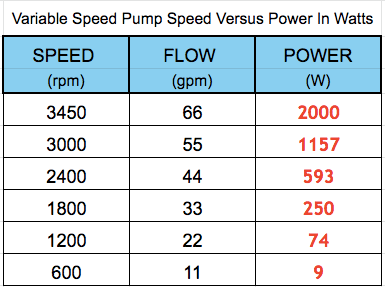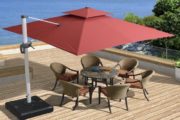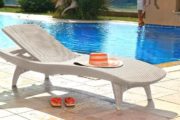This independent website is funded by its readers. It can earn a commission on any purchases made through product links, at no extra cost to the buyer. Learn more >
Some times to save you’ve got to spend.
A variable speed pump costs plenty but it’ll save you a bundle. It’ll start to save on your energy bills from the very first day it’s circulating your pool.
How much? Well the manufacturers quote a possible 80% – 90% energy saving over a regular single speed pump, That’s quite a claim but is it true.?
What is certainly true is that variable speed pool pump can achieve the ideal filtration flow rate using the least amount of energy.
Pool pumps are one of the most significant consumers of energy in our homes during the summer. There energy hogs, an average pool installation consumes an estimated 3,000 to 5,000 kWh per season.
Cutting that kind of energy bill by 80% would be amazing !! Quite a saving, a kind of a miracle in fact. We all want to believe in miracles but we were a tad disappointed when we found out about Santa Claus. Let’s find out some facts before we believe this one….
Variable speed pump energy saving at a glance
Energy Saving With A Variable Speed Pump
So a variable speed pump is generally going to be retro-fitted into an existing system. Being parachuted into hostile territory the new variable speed pump is up against plenty of well seasoned opposition.
The existing filter, the pipe diameter, valves, multivalve and bends are all conspiring against the new VS pump strutting its stuff. Really showing off the maximum energy savings that can be achieved.
Just by replacing the the old timer with the new variable speed pump you’ll see a difference in your energy bills straight away. The much more efficient PMM motor and lower pump RPMs take care of that.
Most owners notice around 50 – 60% energy reduction simply by swopping out old for new. That’s a nice sum of money, but to fully optimise for energy saving you need to look at the surface plumbing and appliances and see if they can be fine tuned or replaced too.

- Variable speed pool and spa pump
- Compatible with automation systems
- Suitable for in-ground pools and spas
Energy Hogs On Your Pool Equipment Pad
You’ve replaced the main energy hog for a thoroughbred stallion when you install a variable speed pump. But to maximise energy savings there’s the rest of the surface equipment to consider.
Pool Filter: Sand or Cartridge ?
The filter and filter valves don’t suck electricity but they increase your energy bills. How’s that?
Well a sand filter and multivalve create significant back pressure. The pump needs to work hard to push the pool water through. It’s obvious to force water through 100 lbs of compacted wet sand will need some work. That costs money.
The multivalve that sits on top of the filter canister. It’s notorious for constricting water flow, it’s another major cause of system head or back pressure.
Many owners choose cartridge filters over sand filters because they let water through freely. A big help in trimming your energy bill. Of course the cost of the filters can be expensive but they can be extracted and cleaned several times before needing replacing.
One filter should last a season or longer with the proper care and attention. If you’re not in the market for a new cartridge filter then you might consider swopping the sand in your filter for filter balls. They’re super effective, massively reduce pressure and rarely need backwashing, Cheap and lightweight, they can also be washed and and stowed at the end of the season.
Changing out the multi-port valve on the sand filter for a push and pull slide valve lowers the system head. The slide valve internal design is much less restrictive than the regular multivalve and less restriction means less pressure, which means less money spent on electricity.
Pipe Diameter Effect On Pressure
Changing plumbing pipe for a larger diameter is not a minor tweak like replacing sand for filter balls or replacing sand filter for cartridge. Depending on how much surface pipe there is in the installation it can make a little or a lot of difference to overall pressure. Tough call, it’s not a job to be taken lightly.
Easier to contemplate is surveying the valves and bends. Then decide if they can be adjusted, taken out or replaced. Many older installations have had equipment added, replaced or discarded. Often there’s unused valves still left in the system. They should be taken out. Any sharp 90º bends in the plumbing that can be replaced by long turn bends will make a difference in head pressure too.
The multivalve that sits on top of the filter canister is notorious for constricting water flow, it’s another major cause of system head or back pressure.
Above ground pool owners really have a variable speed pump energy saving advantage here. The surface plumbing is elementary. Everything is close to the pool. A major bonus apart from large energy savings is that if a variable speed pump is fitted it runs almost silently. Pretty important when the pump is three feet fro the pool.
Images from Amazon Product Advertising








